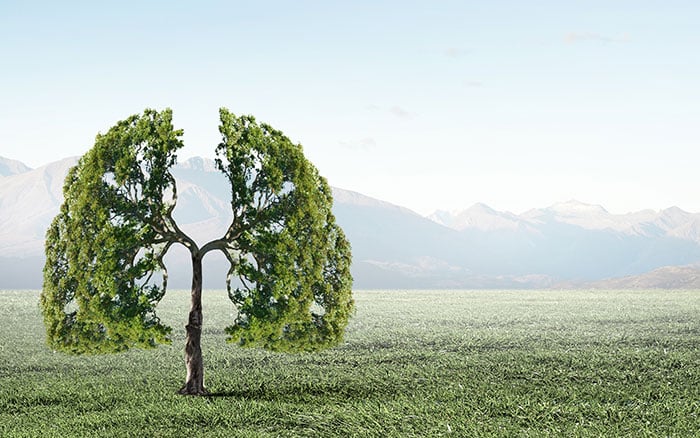Standing small or tall, trees and shrubs have enormous benefits to us, wildlife and the environment. Planting trees and shrubs in your garden will be rewarding to you in so many ways, so read on to find out how to get planting.
Trust in trees
Trees are the planet’s lungs, absorbing carbon dioxide from the atmosphere, storing the carbon and releasing oxygen back into the air, which we then breathe in. Therefore, without an abundance of trees, we are reducing the quality of the air that we have access to.
If you choose to have trees that bear edible fruit, you have access to a wealth of free food such as apples, pears, plums or cherries that can be used for a huge variety of things.

Trees can structurally be of great value in our gardens, as an option for added privacy by using them to reinforce fences or borders, or near to windows. If you choose deciduous trees, it gives the added extra of letting light in through the winter months, whilst providing shade in the warmer months.
Shrubs for good

Planting shrubs can save you money. Yes, really! By growing climbing shrubs up the exterior walls of your home, you will benefit from extra insulation in winter and cooling in the warmer months, whilst also trapping pollutants and lessening noise.
And it’s not just our wallets that will thank us, by planting shrubs in our gardens we are benefitting wildlife too. Providing food, shelter, a place to nest and flowers for pollination will invite birds, bees, butterflies among other creatures. So, they really are a vital part in ensuring our garden’s eco-system is thriving as pollination results in the production of seeds and is needed for plants to reproduce, whilst other animals will assist with keeping unwanted pest populations down.
Get planting
If you’re keen to get planting those shrubs and trees to help your garden burst with life, oxygen and fruit for you to eat, then you can start planting trees and shrubs between October and April, avoiding times where surfaces are waterlogged or frozen as the conditions will not be suitable to dig the hole.

Consider plants that are suited to wet soil if you have soil that tends to get waterlogged over winter. Alternatively, you could plant on a slight mound to elevate. Opting to grow your trees or shrubs in a container is a good idea for smaller gardens, and you can do this any time of the year. However, bear in mind that those planted in autumn and winter are easier to care for because they need less watering than ones planted in the warmer months.
Planting guide
STEP ONE
Prepare the soil by loosening it to the equivalent depth of the height of the rootball, over a wide area to allow good drainage. If you have heavy or sandy soil, incorporate some organic matter to enrich the soil.

STEP TWO
Soak bare-rooted trees or shrubs for about 30 minutes before planting and give containerised plants sufficient water before removing them from their pots.

STEP THREE
Remove the plant from the container and trim pot-bound roots and spread the roots of bare-root plants to see their spread. Magnolia and eucalyptus dislike root disturbance, so trimming the roots isn’t suggested.

STEP FOUR
Dig a planting hole no deeper than the roots, but approximately three times the diameter of the root system.
STEP FIVE
Position the tree or shrub in the planting hole so that the first flare of roots are level with the soil surface.

STEP SIX
For top-heavy or larger specimens, a stake may be required to help support.
STEP SEVEN
Refill the hole, placing soil all around and between the roots to eliminate air pockets.

STEP EIGHT
Firm the soil gently, without compacting the soil too much, and water in. A common issue with new trees and shrubs is not getting the right water requirements. Provide them with thorough watering in dry spells to ensure even the deepest roots have access to water.
Now you know how to plant your trees and shrubs, you can transform your garden into a paradise full of height, structure and texture that will benefit you, your plants, and the local wildlife continually.

I have a pot planted granny Smith tree and also a conference pear tree, not fruits yet but plan to get more trees when I get my garden sorted.